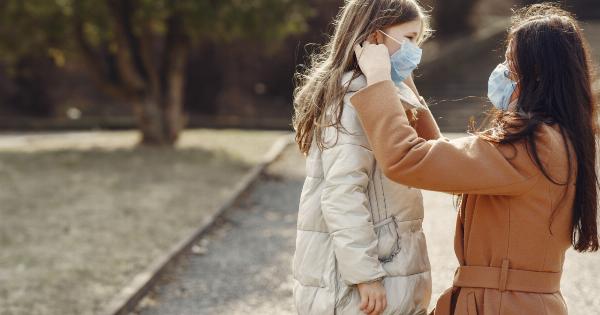Winter is the season of snowflakes and cozy nights by the fireplace, but it’s also the time of year when many children suffer from illnesses. The cold weather and dry indoor air can stress the immune system, leading to a range of ailments.
Some of the most common winter illnesses that affect children include:.
: Influenza
Influenza, commonly referred to as the flu, is a highly contagious respiratory disease caused by the influenza virus. The symptoms of the flu include cough, fever, sore throat, muscle aches, and fatigue.
Children are at a greater risk of developing severe complications due to the flu, such as pneumonia, dehydration, and even death.
: Common cold
The common cold is a viral infection that affects the nose and throat. Symptoms of the common cold include sneezing, runny or stuffy nose, coughing, and fever.
While the common cold is not usually a serious illness, it can make children feel miserable and disrupt their daily activities.
: RSV
RSV, short for respiratory syncytial virus, is a common respiratory virus that affects children. It is the leading cause of bronchiolitis and pneumonia in infants younger than one year of age.
Symptoms of RSV include coughing, wheezing, fever, and difficulty breathing. Children with weakened immune systems or with chronic lung or heart conditions are at a higher risk of developing severe complications from RSV.
: Croup
Croup is a viral infection of the upper airway that causes a barking cough, hoarseness, and difficulty breathing. It is most commonly seen in children between the ages of 6 months and 3 years.
Croup can be a serious illness if the airways become severely blocked, which can lead to hospitalization.
: Bronchiolitis
Bronchiolitis is a viral infection of the lower respiratory tract that causes inflammation and narrowing of the airways. It is most commonly seen in infants and young children, and it is usually caused by the respiratory syncytial virus (RSV).
Symptoms of bronchiolitis include coughing, wheezing, and difficulty breathing. In severe cases, hospitalization may be necessary.
: Pneumonia
Pneumonia is an infection of the lungs caused by bacteria, viruses, or fungi. It can cause fever, coughing, chest pain, and difficulty breathing.
Pneumonia is a serious illness that can be life-threatening, especially in young children with weakened immune systems. Treatment may involve antibiotics, hospitalization, and supportive care.
: Strep throat
Strep throat is a bacterial infection that affects the throat and tonsils. It is most commonly seen in school-aged children and teenagers. Symptoms of strep throat include sore throat, fever, and swollen tonsils.
If left untreated, strep throat can lead to complications such as ear infections, sinusitis, and rheumatic fever.
: Gastroenteritis
Gastroenteritis, also known as the stomach flu, is a viral or bacterial infection of the stomach and intestines. Symptoms of gastroenteritis include vomiting, diarrhea, stomach cramps, and fever.
It is highly contagious and can be spread easily in daycare facilities and schools.
: Norovirus
Norovirus is a highly contagious virus that causes gastroenteritis. It is often referred to as the winter vomiting bug because it is more common in the winter months. Symptoms of norovirus include vomiting, diarrhea, stomach cramps, and fever.
It can be spread easily through contaminated food, water, or surfaces.
: Hand, foot, and mouth disease
Hand, foot, and mouth disease is a viral infection that affects young children. It causes small blister-like sores on the hands, feet, and mouth.
It is spread easily through direct contact with contaminated surfaces or by coming into contact with an infected person’s saliva, feces, or mucus. Symptoms of hand, foot, and mouth disease include fever, sore throat, and loss of appetite.
: Conclusion
Winter can be a challenging time for parents and children due to the increased risk of illnesses.
However, there are several steps that can be taken to reduce the risk of these illnesses, such as washing hands frequently, staying up-to-date on vaccinations, and avoiding contact with people who are sick. If your child does become ill, it is important to seek medical attention as soon as possible to ensure prompt and effective treatment.
























